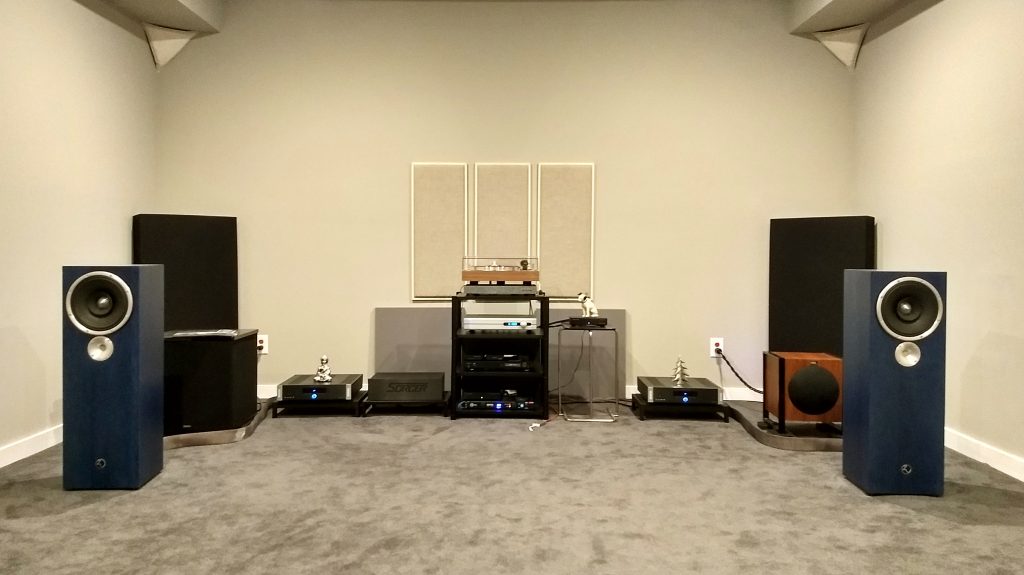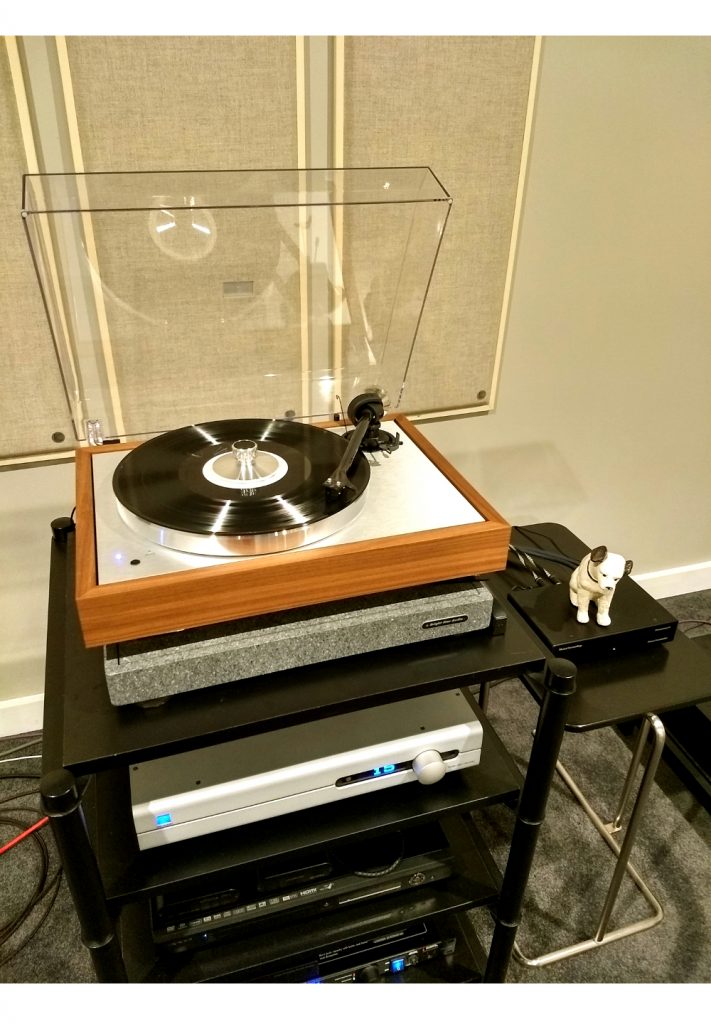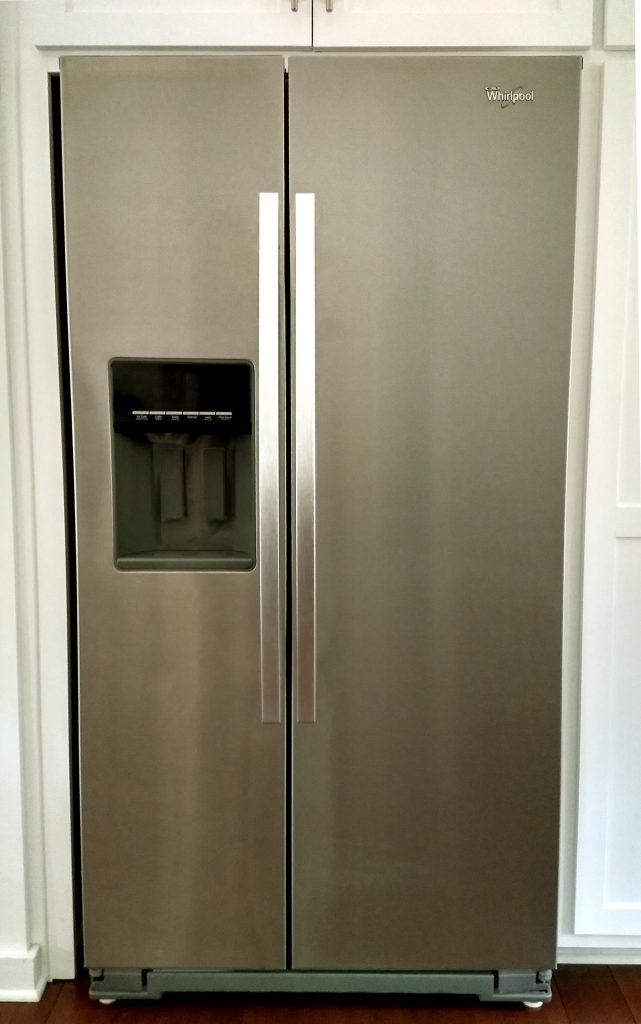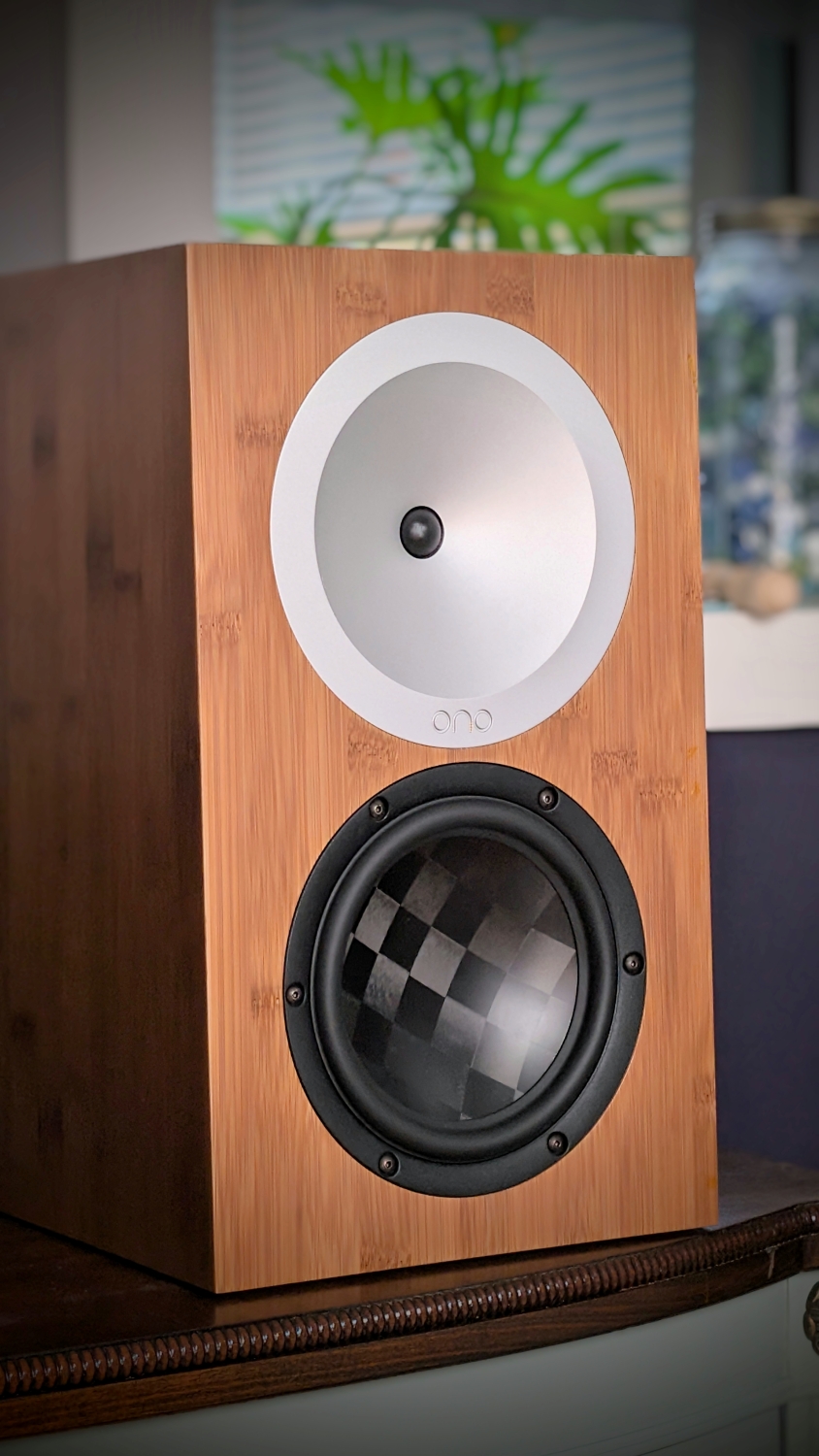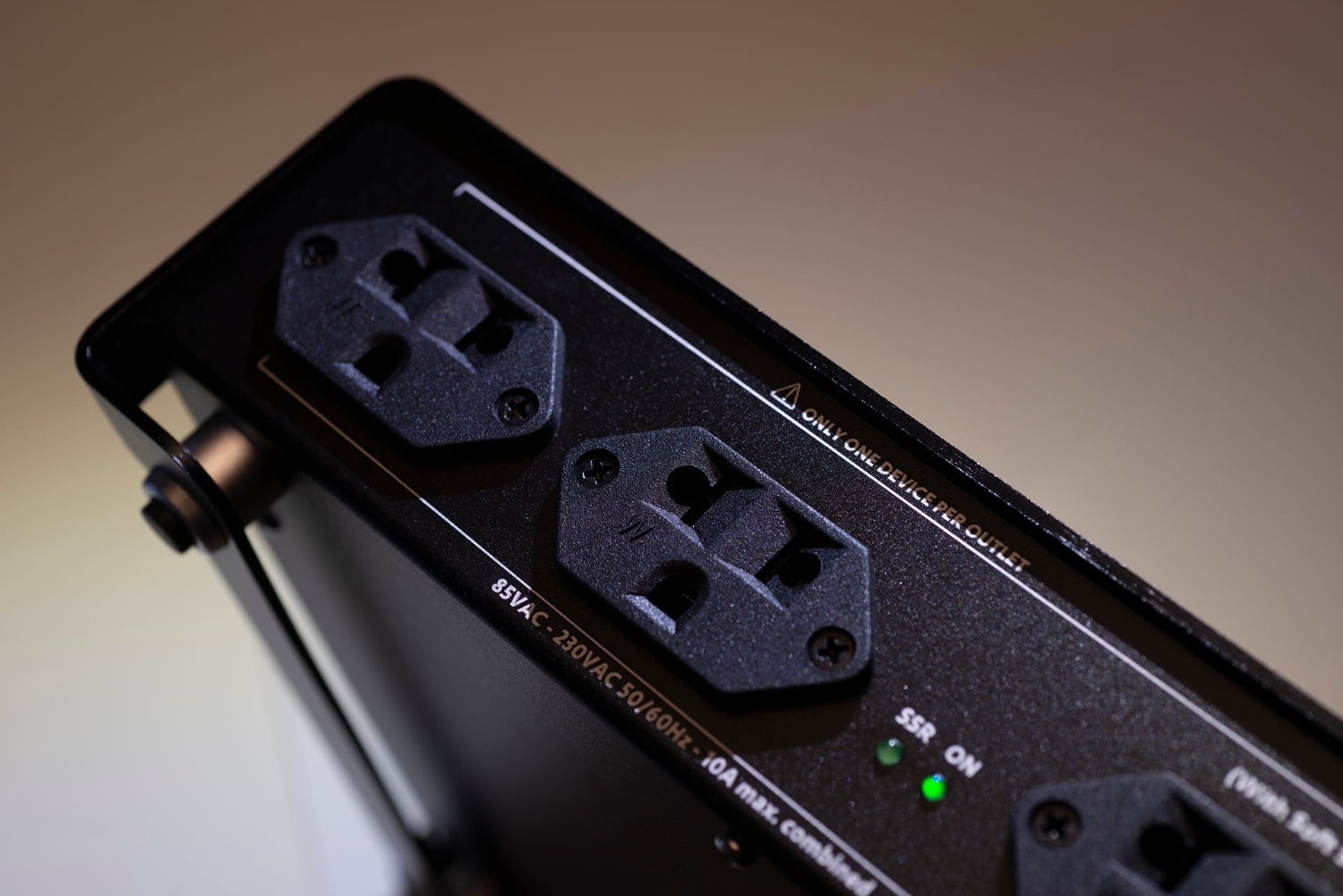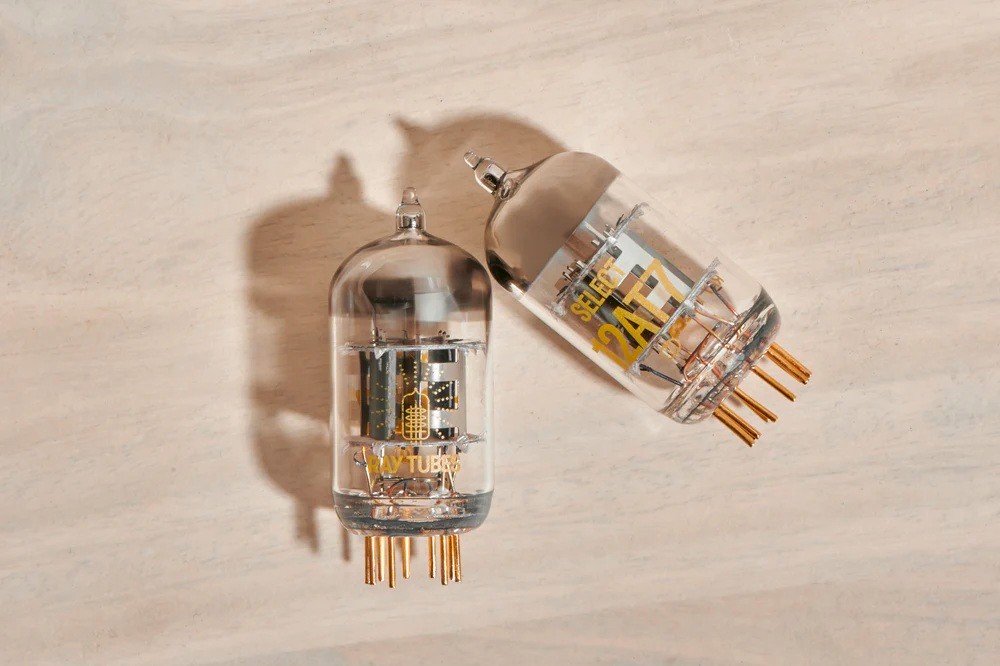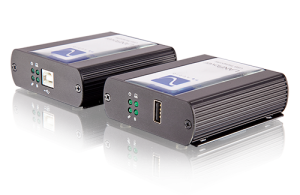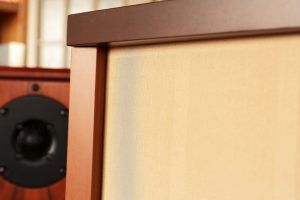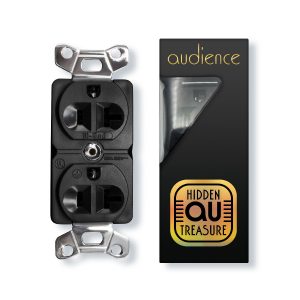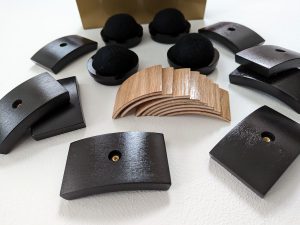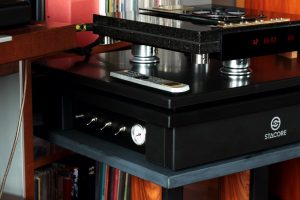I've just gotten in and installed a really cool review unit from ADD Powr (which stands for Algorithm Digital Defined Power), the Sorcer X2, which employs high-tech digital technology to enhance and condition either the dedicated electrical line servicing your audio equipment stack, or perhaps even your entire electrical system. The design is from Bill Stierhout, who invented the QRT technology that Nordost is currently employing in their highly regarded (and rather expensive!) QRT line of power enhancement equipment. Review is underway and forthcoming, but my initial impressions are like, wow! Burn-in is still underway; check back in about six weeks or so for further impressions.
Most of you who've read any of my stuff over the last couple of years are pretty much aware that I fairly recently built a new home, with a purpose-built listening room (mostly of my dreams!). And that along the home building process, the wheels basically came off, for reasons including, but not limited to: unexpected financial issues (cost overruns), but mostly, my inability to provide the kind of round-the-clock, dedicated oversight necessary to guarantee everything was done to my specifications and liking. I know, yadda, yadda, yadda—enough already! After previously living in the same location for almost thirty years, your ears get very acclimated to the baseline noise spectrum—and other noises—specific to your your environment. That process of acclimation seems to be taking a long time here at the new house. It's taken me a couple of years to get any kind of handle on the noise here—and what needs to be done to make the necessary adjustments.
From the outset, I wanted things here to be as energy-efficient and green as possible, and to a certain extent, we were able to accomplish that. Like all-LED lighting, bamboo flooring throughout, Low-E windows, additional layers of insulation, high-efficiency appliances, etc. And I did everything within reason to keep the listening room as quiet as possible, both internally and externally. Despite my best intentions, the results have been a somewhat mixed bag—but hey, we're miles beyond what we had at the old place, and in every important aspect. The new listening room is larger (almost three times the volume of the old room), is much more well constructed, and music is portrayed with a much greater sense of musicality and believability. It's still a work in progress, but essentially, I couldn't be happier.
But still, all is not roses—it's an ever-evolving battle against what I perceive as noise in my living environment. My audiophile neighbor Bob tells me this all the time, “Hey, you live in the woods now. It's noisy out here!” Unfortunately, I'm a bit conflicted by the overall woodland experience; from my days of yore as a backpacker and outdoorsman, I love the nature sounds of the wind and wind chimes in the trees, the chirping of the birds, the rustling of deer and squirrels through the leaves—you get the picture. On the other hand, it drives me freaking crazy! Could all of you please shut the hell up for a few minutes while I try and listen to some music for a while?
We have a bird feeder on our back deck; while I can sit for hours, drinking coffee and blissfully watching the colorful array of birds that come and go, it's also a source of constantly noisy consternation for me. Many of the birds pull seeds from the feeder, then move to the metal pole that holds the feeder in place, and hammer away against the pole to crack open the seeds. And I can hear this in my listening room! Even in my uber-insulated, heavily isolated room that is—at minimum—thirty feet away from the source of impact of seed against metal. And the sounds carry through two heavily insulated interior and exterior walls, with a large air cavity in between—I can still hear the birds hammering away at those damn seeds! It's simply maddening, to say the least.
The LED lighting idea has been overwhelmingly positive—we have over 60 LED can lights in the ceilings throughout the house, most of them on dimmers—and at a savings of about 30% on our monthly electric bill. However, in the new listening room, I immediately noticed that the LED lights buzzed quite loudly. Buzzing when undimmed, and even more so when dimmed. The style of LEDs we chose for the cans are the self-contained units with an integral trim ring that can be inserted into any standard fixture. Puzzling, to say the least, because none of the other lights throughout the house seem to buzz at all.
And the LEDs in my listening room are on a completely different electrical circuit from the audio equipment—didn't want to risk any strange interactions there. I farted around with this problem in the listening room for a couple of months, finally purchasing a high-tech $75 dimmer that buzzed less at full power, but not at all when dimmed; since I mostly listen in reduced lighting, I lived with it for about eighteen months. I recently replaced the integrated LEDs in the listening room with a newer generation of buzz-free LED bulbs, and replaced the $75 dimmer with the original dimmer. I now get full power lighting and full-range dimming with no hum—a major improvement, eliminating at least one source of totally annoying noise. Of course, I'm stuck with a $75 dimmer I now have no use for.
Over the two years we've been here, I've upgraded my audio system significantly—and this has been the major path to reduced noise in the listening room. The only real holdovers from the old place and system are my Zu Audio Omen loudspeakers, both subwoofers, and my Emotiva XPA-1L mono amps. Everything else is newer, better, more robustly built, and exceptionally quieter than the equipment stack at the old place. Which is what was in place here for about the first year. Really big strides were made with the acquisition of the PS Audio Gain Cell DAC/Preamplifier, which is the new beating, controlling heart of my system. And both digital and analog playback have made remarkable gains in noiseless clarity, with the Oppo/Sonore Rendu/PS Audio/JCAT/Roon setup on the digital front end, and the ProJect/Musical Surroundings/Hana combination of gear on the analog side. All contributing to a level of pure musical enjoyment I've never previously experienced. The old system was cobbled together from really decent bones, but obviously just didn't have the resolving capabilities and lower noise threshold of the new components.
And, of course, there are incredibly helpful tweaks, like Norman Varney's EVP isolators, which have improved the isolation of my dual subs—and especially my turntable's isolation—to the nth degree. I have wall treatments and corner traps strategically placed that help control spurious resonances and frequency aberrations within the room. But the EVPs help by not only controlling key resonance flashpoints within the room, but also by helping to prevent excessive vibrations from exiting the room. From an equipment standpoint, there's very little else within my budget I can think of that would add a significant degree of resonance isolation improvement, and the resultant quietness accompanying it. The importance that equipment upgrades have wrought on my setup cannot be overstated—listening to my audio system now only in the barest sense resembles the sound of the system I moved in with two years ago. There's so much more clarity in every aspect, and so much less noise.
But, now that we've reached a new personal benchmark for decreased system noise—lest we dare live in audio blissfulness for any period of time—a new source of noise has reared its ugly head. After finally resolving the LED lighting issue in the listening room, I recently and suddenly became aware of this hum that just couldn't be identified, and wouldn't go away. I had my ears pressed against every piece of equipment in the room, every speaker, on a step ladder with my ears against the lighting fixtures—nothing. The search extended to adjacent basement rooms, and while in the large cavity room behind the equipment wall of the listening room, I hit paydirt: the hum/vibration was coming from the ceiling above me. Which should place it somewhere in the upstairs kitchen.
The culprit? Our new-with-the-new-home, high-efficiency refrigerator, which is—with God as my witness—the noisiest damn appliance on the freaking planet. I know this sounds, perhaps, highly implausible—but apparently the refrigerator noise must have been being masked by the combination of all the old, noisy system equipment and LEDs in the listening room. All contributing incrementally to raise the noise floor to the point where it just obfuscated the hum of the fridge. Now that the noise floor in the listening room has been lowered to nearly nothing, I just can't unhear that damn refrigerator. And it's located a floor up, humming through nine inches of insulation and three-quarter inches of subflooring layered with three-quarter inches of solid bamboo. And on the vertical plane, it's actually located four feet outside the boundary of my listening room. Yet that damnable abomination of my existence buzzes, hums, and vibrates almost continually—enough to make life in the otherwise newly quiet listening room a veritable hell-on-earth. Beth is unsympathetic to my plight. "You mean to tell me that you don't hear half of what I say, but you can hear that damn refrigerator humming? You're pathetic!"
I contacted isolation guru Norman Varney again a month or so ago for his thoughts on this very vexing subject. His idea was a set of appliance isolators that can be obtained from Amazon that he says (in his experience) work as advertised in reducing the vibrations transmitted by the offending appliance. The silver lining is that they're cheap, at less than $50 for the set. The problem—and this is a huge one—is that they're impossibly difficult to get under the offending appliance, especially one that's boxed into a built-in custom cabinet arrangement. Like mine. Beth wanted these grandiose custom cabinets in her new kitchen, and they're expertly built and beautifully executed—but damn near impenetrable, especially in terms of adding any aftermarket isolation equipment. I've contemplated possibly adding a full-coverage rubber isolation mat underneath the fridge—that might be the next avenue I explore. I've also considered going the “green glue” route, removing all the insulation underneath in the basement area occupied by the fridge and putting several applications of a noise-reducing coating on the joist structure just underneath. Then replacing the insulation, in hopes of containing or reducing the offending vibration and hum.
In the meantime, I've at least come up with a satisfactory temporary workaround, and it unfortunately displeases Beth to no end. The fridge is on a breaker all by itself, so I can simply flip the breaker when I need to do any critical listening. Like trying to evaluate whether a specialty digital line voltage enhancement is actually adding anything of value to the audio spectrum—or, perhaps, more concisely—whether it's actually removing anything. The refrigerator is fine being off for a couple of hours at a time, and besides, we keep all the adult beverages in the fridge in the garage. I just need to really focus on making certain that I reset that breaker post-listening before I head back upstairs. Otherwise, I'll really be in a pickle! The joys of home ownership—at least, now, I know what to do in the unlikely event that I ever end up in this predicament again. I now know where to put the freaking refrigerator—as far as humanly possible from the listening area—and my oversight of all the construction details will be brutal for the next builder. Maybe I can afford to get Norman Varney to come and do all the heavy lifting for me!
There is always the lottery, and trust me, hope does spring eternal!




